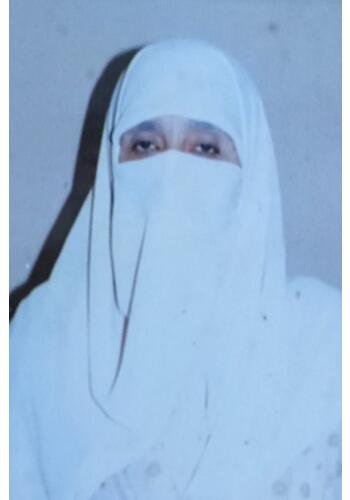- امتزا ج, Vol # 22, Issue # 22
- اردو داستانوں میں نفسیاتی محرکات
اردو داستانوں میں نفسیاتی محرکات
- Dr Qudsia Abdul Kareem/
- December 31, 2024
“Psychological Motives in Urdu Dastan”
Keywords
Daastan is the oldest genre of our literature; such long & novel tales are a part of every language's history and cultural symbol. It started in the 17th century with Mullah Wajhi's Sabras and then continued till the 20th century with the Arabic Persian and Indian rhythmic tales being translated into Urdu. The purpose of such tales was to provide entertainment, the magical storytellers would create an imaginary world with their oratory and let the listener roam in it, and the Daastan writers later did the same work. These Daastan were not only a cultural and intellectual asset but you can also witness a few Psychological elements. One can understand the psychological changes in older times with the help of ancient literature. The relation between Psychology and literature is not new, the thorough research of human Psychology by Freud, Zong & Edler brought about many truths about literature and Psychology being interrelated. Emotion and many other aspects of human Psychology can be seen as the subject of these Daastan. Daastan based on play in different human situations can be easily understood through a long & interesting tale rather than by the boring details of Psychology. The trend of Daastan writing peaked in the 19th century because of psychology. The structure of Daastan and the way it was presented suited the easy-going nature of the subjugated people and daydreaming. These Daastans were the reflections of their dreams and aspirations.
References:
-
Ghulam Hussain Azhar Abbas, Urdu Dastan: Ek Nafsiyati Jaiza, in Quarterly Urdu, (Vol. 56, No. 3, 1976), p. 75.
-
Asif Farrukhi, Purani Kahaniyan, in Quarterly Urdu (April-June 1989), p. 95.
-
Muhammad Younas Hasani, Kawishain, (Karachi: Rubab Publications, 1992), p. 30.
-
Sunbal Nigar, Urdu Nasr ka Tanqeedi Mutala, (New Delhi: Educational Publishing House, 1999), p. 50–51.
-
Saleem Agha Qazilbash, Urdu Afsanay ka Nafsiati aur Jinsi Zawiya Nazar Se Jaiza, in Mukalma, June-September, 2000, Academy Bazyaft, Karachi, p. 135.
-
Ibid, p.137.
-
Ibid, p. 139.
-
Gyan Chand Jain, Urdu ki Nasri Dastanen, (Karachi: Anjuman Taraqqi Urdu Pakistan, 1969), p. 117.
-
Saleem Akhtar, Dastan aur Novel Tanqeedi Mutala, (Lahore: Sang-e-Meel Publications, 1991), p. 27.
-
Athar Siddiqui, Tilism-e-Hoshruba Mein Mafuq-ul-Fitri Anasir, in Quarterly Urdu, No. 4, Vol. 53, 1977, Anjuman Taraqqi-e-Urdu Pakistan, Karachi, p. 95.
-
Shah Alam Sani, Ajaib-ul-Qasas, (Lahore: Majlis Taraqqi Adab, 1965), p. 28.
-
Rajab Ali Baig Sarwar, Fasana-e-Ajaib, (Lahore: Urdu Markaz, 1992), p. 29.
-
Ibid.
-
Mir Amman, Bagh-o-Bahar, (Lahore: Al-Faisal Publishers, 2003), p. 45.
-
Ghulam Hussain Azhar, Urdu Dastan: Ek Nafsiyati Jaiza, in Quarterly Urdu, No. 3, Vol. 52, 1976, Anjuman Taraqqi-e-Urdu Pakistan, Karachi, p. 101.
-
Rajab Ali Baig Sarwar, Fasana-e-Ajaib, p. 28.
-
Ibid, p. 46.
-
Shah Alam Sani, Ajaib-ul-Qasas, p. 127.
-
Ibid, p. 123.
-
Syed Fakhruddin Hussain Sukhan, Sarosh-e-Sukhan, Edited by Khalil-ur-Rehman Dawoodi, (Lahore: Majlis Taraqqi Adab, 1963), p. 61.
-
Nihal Chand Lahori, Mazhab-e-Ishq, Edited by Khalil-ur-Rehman Dawoodi, (Lahore: Majlis Taraqqi Adab, San Nadara), p. 39.
-
Mazhar Ali Wila, Baital Pachisi, (Lahore: Majlis Taraqqi Adab, 1965), p. 74.
-
Insha Allah Khan Insha, Kahani Rani Ketki aur Kunwar Uday Bhan Ki, Edited by Maulvi Abdul Haq & Imtiaz Ali Arshi, (Karachi: Anjuman Taraqqi Urdu Pakistan, 2003), p. 101.
-
Rajab Ali Baig Sarwar, Fasana-e-Ajaib, p. 32.
-
Insha Allah Khan Insha, Kahani Rani Ketki aur Kunwar Uday Bhan Ki, p. 50.
-
Nihal Chand Lahori, Mazhab-e-Ishq, p. 6.
-
Mazhar Ali Wila, Baital Pachisi, p. 70–71.
-
Ibid, p. 106.
-
Insha Allah Khan Insha, Kahani Rani Ketki aur Kunwar Uday Bhan Ki, p. 89.
-
Ghulam Hussain Azhar, Urdu Dastan: Ek Nafsiyati Jaiza, p. 158–159.
-
Ibid, p. 159.
32. Gyan Chand Jain, Urdu ki Nasri Dastanen, p. 115–116.
Bibliography:
-
Akhtar, Saleem, Dastan aur Novel Tanqeedi Mutala, Lahore: Sang-e-Meel Publications, 1991.
-
Insha, Insha Allah Khan, Kahani Rani Ketki aur Kunwar Uday Bhan Ki, Murattiba Maulvi Abdul Haq & Imtiaz Ali Arshi, Karachi: Anjuman Taraqqi Urdu, 2003.
-
Sani, Shah Alam, Ajaib-ul-Qasas, Lahore: Majlis Taraqqi Adab, 1965.
-
Jain, Gyan Chand, Urdu ki Nasri Dastanen, Karachi: Anjuman Taraqqi Urdu, 1969.
-
Hasni, Muhammad Younas, Kawishain, Karachi: Rubab Publications, 1992.
-
Rajab Ali Baig Sarwar, Fasana-e-Ajaib, Lahore: Urdu Markaz, 1992.
-
Sukhan, Syed Fakhruddin Hussain, Sarosh-e-Sukhan, Edited by Khalil-ur-Rehman Dawoodi, Lahore: Majlis Taraqqi Adab, 1963.
-
Lahori, Nihal Chand, Mazhab-e-Ishq, Murattiba Khalil-ur-Rehman Dawoodi, Lahore: Majlis Taraqqi Adab, San Nadara.
-
Mir Amman, Bagh-o-Bahar, Lahore: Al-Faisal Publishers, 2003.
Magazines
-
Mukalma, June-September 2000, Academy Bazyaft, Karachi.
-
Quarterly Urdu, No. 4, Vol. 53, 1977, Anjuman Taraqqi-e-Urdu Pakistan, Karachi
-
____, No. 3, Vol. 56, 1976, ____
-
____, April to June 1989, ____
خ خ
Statistics
Author(s):

Pakistan
Details:
| Type: | Article |
| Volume: | 22 |
| Issue: | 22 |
| Language: | Urdu |
| Id: | 676285c48a3d2 |
| Pages | 77 - 94 |
| Discipline: | Language and Literature |
| Published | December 31, 2024 |
Statistics
|
|---|


This work is licensed under a Creative Commons Attribution 4.0 International License.
